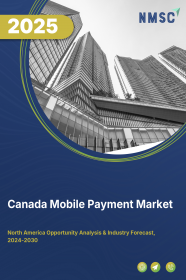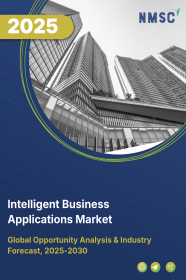
Canada Mobile Payment Market by Age (Generation Z, Millennials, Generation X, and Baby Boomers), by Payment Type (Proximity and Remote), and by Application (Money Transfers, Merchandise Purchases, Bill Payments, Airtime Top-ups, Ticketing, and Others) – Opportunity Analysis and Industry Forecast, 2024–2030
Industry: ICT & Media | Publish Date: 06-Jan-2025 | No of Pages: 111 | No. of Tables: 79 | No. of Figures: 44 | Format: PDF | Report Code : IC2472
US Tariff Impact on Canada Mobile Payment Market
Trump Tariffs Are Reshaping Global Business
Canada Mobile Payment Market Overview
The Canada Mobile Payment Market size was valued at USD 1.50 billion in 2023, and is predicted to reach USD 5.85 billion by 2030, with a CAGR of 20.3% from 2024 to 2030. The mobile payment system, also termed as money transfer, mobile money, m-payments, electronic payments, and digital payments, facilitates financial transactions using mobile devices such as smartphones, tablets, and wearables. These transactions are facilitated through mobile apps or various methods such as proximity and remote transactions. Mobile payment systems encompass diverse types such as mobile wallets, mobile banking apps, and online payment services such as PayPal, Venmo, and Google Pay.
Employing technologies such as SMS, near-field communication (NFC), quick response (QR) codes, and others, these systems ensure seamless transactions while employing robust security measures including encryption and biometric authentication to safeguard personal and financial data. Appreciated for their convenience, speed, security, and integration with other financial tools, mobile payment systems witness widespread adoption. Moreover, users can configure payment apps to automatically settle bills, such as utility or credit card bills, ensuring efficient financial management and preventing late payments.
High Adoption of Smartphones Drives the Canada Mobile Payment Market Growth
The widespread adoption of smartphones and the growing penetration of internet are fundamental factors driving the growth of the mobile payment market in the country. With smartphones becoming increasingly prevalent and internet connectivity expanding globally, a vast majority of consumers now possess the necessary tools for mobile payments. Smartphones act as convenient and portable payment terminals, enabling users to make transactions at their convenience, regardless of location.
Concurrently, the increasing availability of internet access ensures seamless connectivity, facilitating secure and real-time payment processing. With more consumers embracing smartphones and gaining access to reliable internet services, the potential user base for mobile payments witnesses a significant surge. This trend not only enhances convenience and accessibility for consumers but also encourages merchants to adopt mobile payment solutions to meet evolving consumer preferences, thereby fueling the overall expansion of the Canada mobile payment market trends.
Rising Fintech and Digital Banking Services Propels the Market Growth
The ascent of fintech and digital banking significantly propels the Canada mobile payment market growth. Fintech innovations and digital banking services offer streamlined financial solutions accessible via mobile devices, democratizing financial services. Consumers can conveniently manage their finances, execute payments, and conduct transactions from their smartphones.
Integration of mobile payment features within fintech apps and digital banking platforms enhances user experience with seamless access to payment options and account management. Fintech firms and digital banks often pioneer payment technologies such as peer-to-peer transfers and contactless payments, driving adoption and shaping industry standards. As consumers increasingly embrace fintech and digital banking, the Canada mobile payment market expands, offering more choice and accessibility in the digital economy.
Resistance from Traditional Financial Institutions Restrains the Market Expansion
The Canada mobile payment market expansion is hindered by resistance from traditional financial institutions in the country. Established banks and financial entities may perceive mobile payment solutions as disruptive to their existing business models, leading to reluctance in supporting or promoting these innovative technologies. This resistance stems from concerns about potential revenue cannibalization, regulatory complexities, and the perceived threat of losing control over payment infrastructures.
Consequently, traditional financial institutions may hesitate to invest in mobile payment initiatives or collaborate with fintech startups and mobile payment providers, hindering the development and adoption of innovative payment solutions. Overcoming this resistance requires collaboration, regulatory alignment, and education to demonstrate the benefits of mobile payments for both financial institutions and consumers, thereby unlocking the full potential of the Canada mobile payment market.
The Rise of Voice-Activated Mobile Payments Creates Market Opportunities
The ascent of voice-activated mobile payments introduces thrilling opportunities within the Canada mobile payment market sphere in the country. These payment systems empower users to initiate transactions and carry out banking tasks using natural language commands, tapping into virtual assistants such as Amazon Alexa or Google Assistant.
This innovation delivers unmatched convenience, enabling users to execute payments hands-free and while on the move. Voice-activated mobile payments streamline the payment process, enhancing user experience and fostering accessibility, particularly for individuals with disabilities or limited mobility.
Furthermore, they pave the way for seamless integration with smart home devices, wearable technology, and IoT ecosystems, expanding the reach and versatility of mobile payment solutions. With ongoing advancements in voice technology, the integration of voice-activated mobile payments into daily routines presents promising opportunities for innovation, distinction, and market growth.
Competitive Landscape
Various market players operating in the Canada mobile payment industry include Alphabet, Inc. (Google), Alibaba Group Holdings Limited, Amazon.com, Inc., Apple, Inc., PayPal Holdings, Inc., Visa, Inc., Tencent Holdings Limited (WeChat), MasterCard International, Inc., Samsung Electronics Co. Ltd., Block, Inc., and others. These key players have adopted various strategies to strengthen their position in the mobile payment sector in Australia.
Canada Mobile Payment Market Key Segments
By Age
-
Generation Z
-
Millennials
-
Generation X
-
Baby Boomers
By Payment Type
-
Proximity
-
Near-Field Communication (NFC)
-
Quick Response (QR) Code Payments
-
-
Remote
-
Internet Payments
-
SMS/Direct Carrier Billing
-
By Application
-
Money Transfers
-
Merchandise Purchases
-
Bill Payments
-
Airtime Top-ups
-
Ticketing
-
Others
REPORT SCOPE AND SEGMENTATION:
|
Parameters |
Details |
|
Market Size in 2023 |
USD 1.50 Billion |
|
Revenue Forecast in 2030 |
USD 5.85 Billion |
|
Growth Rate |
CAGR of 20.3% from 2024 to 2030 |
|
Analysis Period |
2023–2030 |
|
Base Year Considered |
2023 |
|
Forecast Period |
2024–2030 |
|
Market Size Estimation |
Billion (USD) |
|
Growth Factors |
|
|
Companies Profiled |
10 |
|
Market Share |
Available for 10 companies |
|
Customization Scope |
Free customization (equivalent up to 80 working hours of analysts) after purchase. Addition or alteration to country, regional, and segment scope. |
|
Pricing and Purchase Options |
Avail customized purchase options to meet your exact research needs. |
KEY PLAYERS
-
Alphabet, Inc. (Google)
-
Alibaba Group Holdings Limited
-
Amazon.com, Inc.
-
Apple, Inc.
-
PayPal Holdings, Inc.
-
Visa, Inc.
-
Tencent Holdings Limited (WeChat)
-
MasterCard International, Inc.
-
Samsung Electronics Co. Ltd.
-
Block, Inc.

















 Speak to Our Analyst
Speak to Our Analyst





















